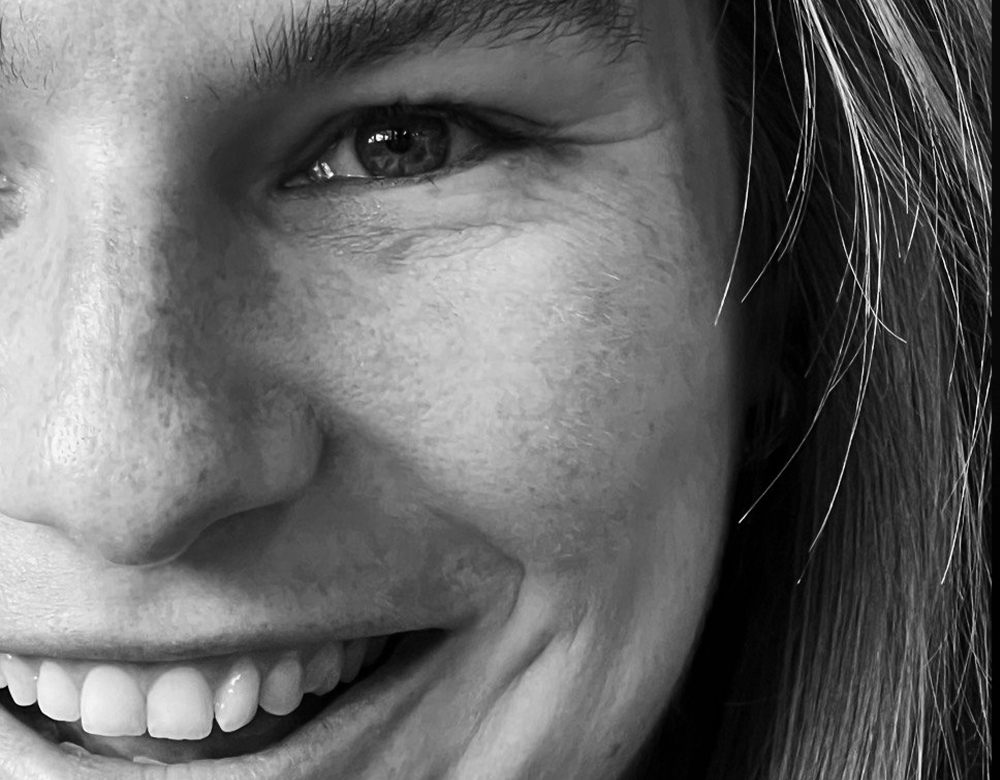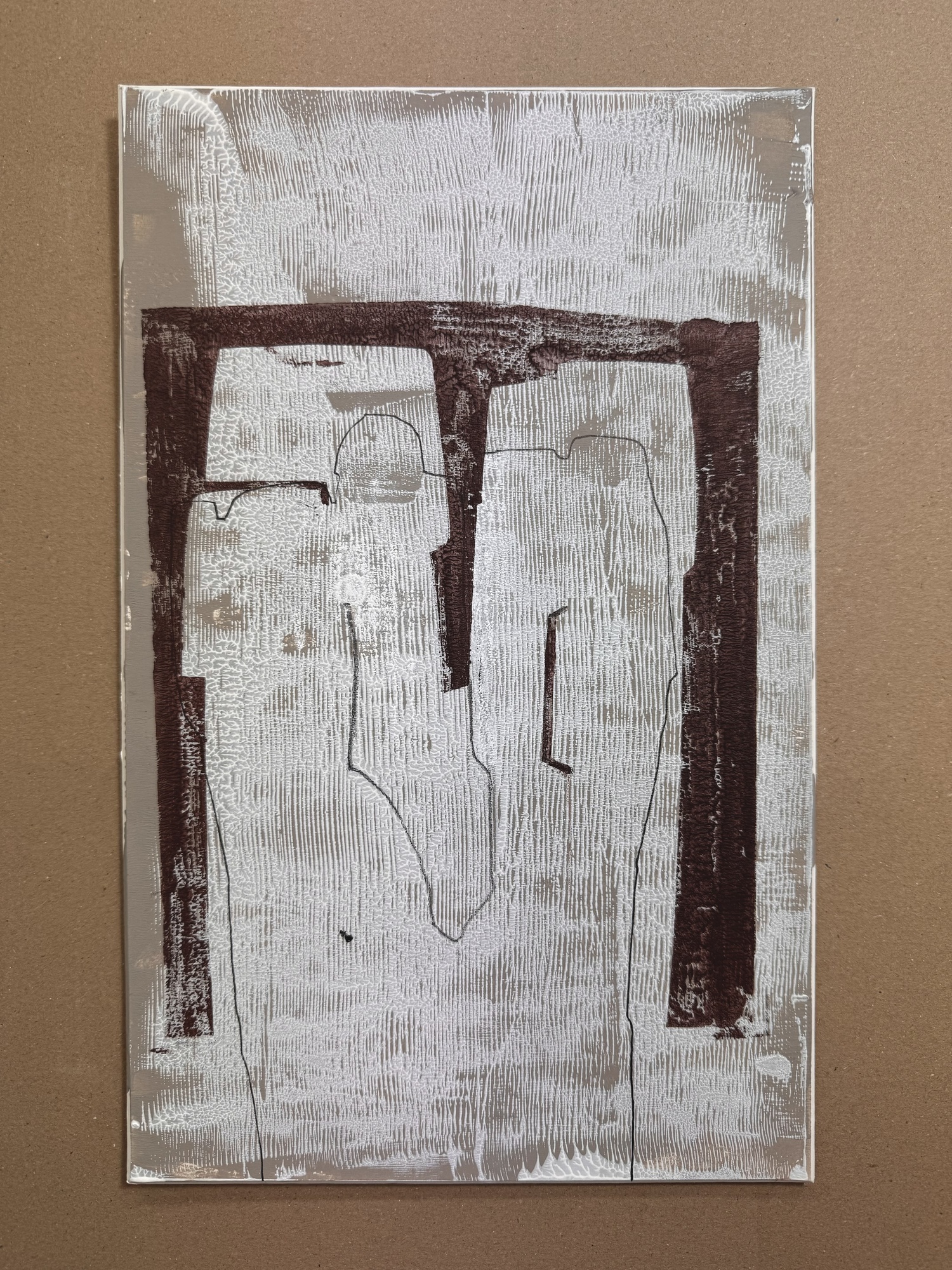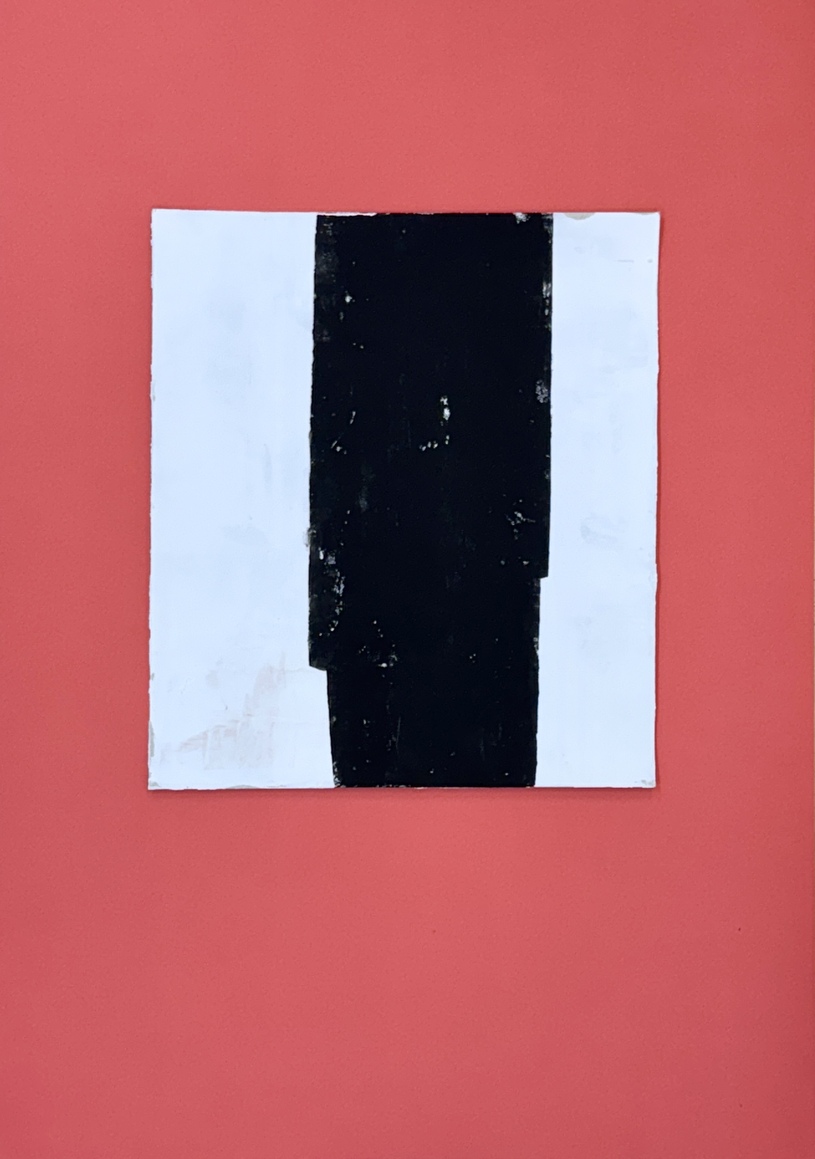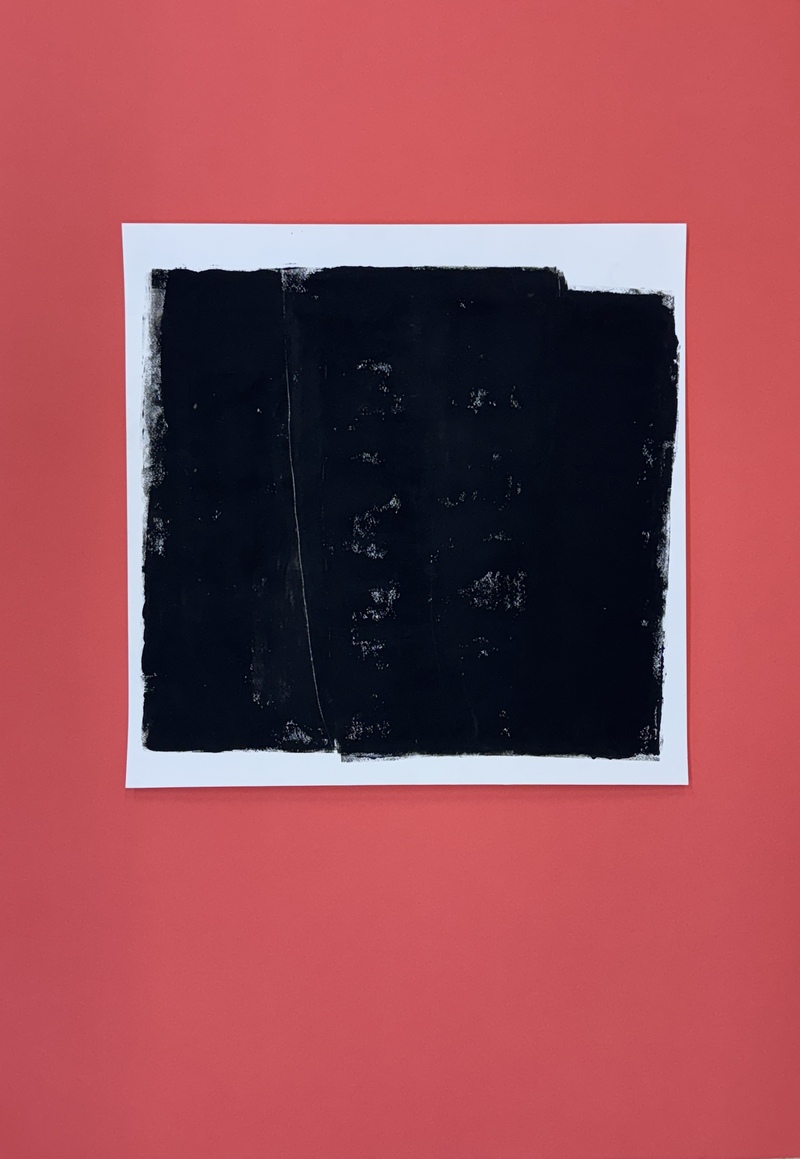Katharina Stepper
Year of birth: 1991
Where do you live: Italy / Germany
Your education: Architect / Artist
Describe your art in three words: Aesthetic, composition, precision
Your discipline: Painting sculpture photography
Website | Instagram

How did your background in architecture influence your approach to fine art?
The architectural background, having the graduation Master of Science’ in this subject, taught me to analyze the world through structure, proportion, and space. Therefore, architectural knowledge and thinking has a profound and lasting impact on my art. The parameters of structure, proportion, and space are translated into two dimensions in my pictures through line and surface. Even in my photographic compositions, the principle of abstracting reality into line and surface is central.
Just as I create space as an architect, I transform human emotions and thoughts into visual compositions as a visual artist, where every form and colour develops a function and relationship with one another. The search for a balanced equilibrium, harmony, aesthetics and beauty is central to my work, as well as in architecture, visual art and sculpture.
Could you describe how you explore emotional and mental states in your work?
In my work, I explore the subtle layers of interpersonal relationships and emotional and mental experiences. For me, art is a language through which I can express what is sometimes difficult to articulate in words. My focus is on moments of emotional intensity that we experience daily, which I convey in subtle ways, reflected in my choice of colours and forms. For example, I try to represent complexity and tension by using contrasting tones or by placing different vibrating surfaces side by side. Every compositional element, whether a brushstroke or a line, reflects a human experience, relationship, thought or fleeting emotion.
 Katharina Stepper | Zusammen | 2024
Katharina Stepper | Zusammen | 2024
How do you use colour and form to express complex human emotions and experiences?
Colour and form are fundamental tools in my work for expressing the complexity of emotional states. The study of Goethe’s Theory of Colours and Kandinsky’s work helped me understand the meaning and effect of colour. Each colour carries its own symbolism and vibration. For example, warm tones might evoke a sense of intensity, passion, or warmth, while cooler ones may represent distance, melancholy, or introspection (drawing on Rudolf Steiner’s Temperament Theory). Furthermore, I develop my compositions from a complex palette of softness and severity, intuition and rationality – principles that may also be dissolved in their appropriate context. Each work is designed to provoke an emotional reaction in the viewer and invite him to reflect according to his imagination on his own inner state.
What role do aesthetics and beauty play in your artistic process?
Aesthetics and beauty are elements that celebrate the power of art to touch the soul. To get there, in my work I am not making use of the anti-aesthetic theories of postmodernism, focusing instead on minimalist expression through simple, archaic forms and colours, questioning the complexity and refinement of traditional ‘beautiful’ art.
It’s not about superficial or decorative beauty, but a beauty that arises from the depth and sincerity of expression. Aesthetics, as a visual language, capable of conveying complex emotions and their essence, is a significant part of my creative process. Aesthetic in my art reveals something universal, something that goes beyond the visible surface. It’s a means of creating connection and reflection – an invitation for the viewer to explore the world and our inner selves in a new and deeper way.
 Katharina Stepper | In Due I | 2024
Katharina Stepper | In Due I | 2024
Can you talk about the challenges you face in capturing the nuances of human feelings in your paintings?
Feelings, and the human emotional experience, are by definition fleeting and transient, making them difficult to capture in a single image. Every emotional state has its own nuances. How to express these subtle tensions without resorting to literal figurative representation? and nevertheless convey their complexity through the abstract language of forms and colours. It’s a process of continuously letting go of realism to reach something that touches the universal dimension of the soul.
How do you balance the abstract and the representational elements in your art?
In my work, abstraction is a tool that allows me to break free from the principles of figurative representation.
As Christo and Jeanne-Claude said: ‘In covering, the presence of the hidden is revealed!’ and ‘In abstraction, the detail appears according to the viewer’s imagination.’ There remains the freedom to see, to feel and to interpret.
The challenge lies in using a minimalist, archaic visual language to portray rich interpersonal relationships while maintaining the expressive intent. Finding a balance between these two elements and creating a work that is both emotionally engaging and formally interesting is key. The reverse is true in my photographic work, where, starting from reality, the image is alienated into a purely aesthetically tense composition.
 Katharina Stepper | In Due II | 2024
Katharina Stepper | In Due II | 2024
Your work explores a wide spectrum of feelings; is there a specific emotion or state that you feel most drawn to express?
While my oeuvre spans a vast emotional spectrum, I am most drawn to the exploration of positive, healthy emotional states.
When I address loneliness, for example, it is not the despairing solitude that I seek to express, but rather a more introspective, contemplative form of aloneness. This is a state of quiet strength – self-assured, yet open to the world. It is an aloneness that is not defined by isolation, but by a serene independence, an inner calm, and a deep sense of self that paradoxically allows for greater connection to others. This nuanced exploration of solitude, as a space for personal growth and reflection, remains a central theme in my work.
 Katharina Stepper | In Due III | 2024
Katharina Stepper | In Due III | 2024

Leave a Reply